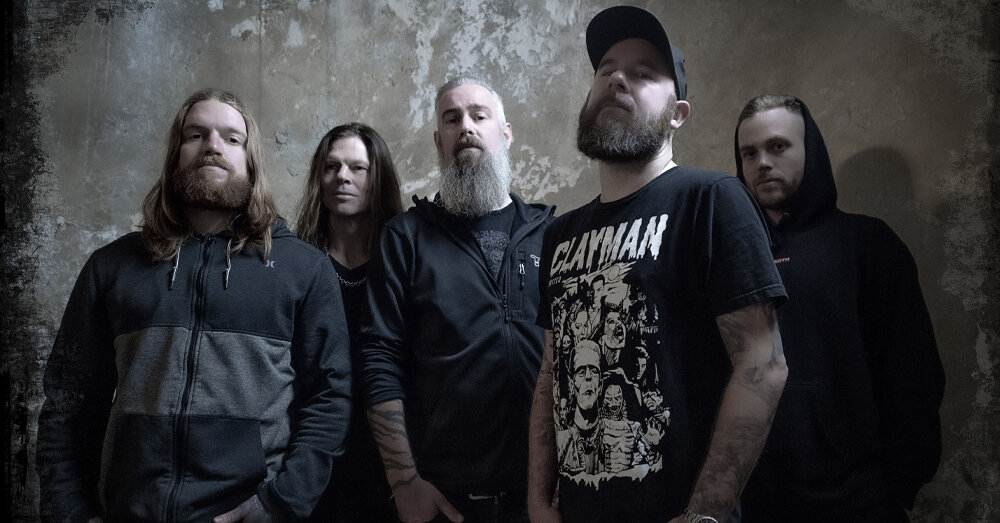
Metal music, a genre renowned for its raw power and intensity, has traversed a fascinating journey from its humble beginnings to its current diverse forms. Emerging in the late 1960s and early 1970s, bands like Black Sabbath and Led Zeppelin laid the foundation with heavy guitar riffs, thunderous drums, and dark lyrical themes. This era marked the birth of what would soon become known as heavy metal—a genre that challenged conventional music norms with its aggressive sound and rebellious attitude.
As the 1980s dawned, metal music began to diversify. Subgenres like thrash metal (Metallica, Slayer) and glam metal (Motley Crue, Def Leppard) emerged, each bringing its own distinctive flair to the genre. Thrash metal, characterized by its fast tempo and aggressive guitar solos, appealed to a younger audience seeking a more intense musical experience. Meanwhile, glam metal embraced a flashy, theatrical style, emphasizing visual aesthetics alongside catchy hooks and anthemic choruses.
The 1990s witnessed further evolution as metal branched into new territories. Alternative metal (Tool, Alice in Chains) and nu-metal (Linkin Park, Korn) introduced elements of alternative rock, hip-hop, and electronic music into the metal landscape. These subgenres fused aggressive guitar work with introspective lyrics and innovative production techniques, appealing to a broader audience and influencing mainstream music trends.
In the 21st century, metal music continues to evolve. Progressive metal (Dream Theater, Opeth) pushes musical boundaries with complex song structures and virtuosic musicianship, appealing to listeners with a taste for intricate compositions. Meanwhile, metalcore (Killswitch Engage, Bullet for My Valentine) blends metal aggression with hardcore punk energy, creating a dynamic and emotionally charged sound that resonates with a younger generation.
Today, metal music thrives as a global phenomenon, with bands from diverse cultural backgrounds and musical influences contributing to its rich tapestry. From the relentless power of classic metal to the experimental spirit of contemporary subgenres, the evolution of metal music reflects not only musical innovation but also the enduring appeal of raw emotion and sonic intensity.
Forging Steel: Tracing the Roots of Metal Music from Blues to Heavy Riffs
Ever wondered how that roaring sound of heavy metal came into existence? It’s more than just music; it’s a journey that traces back through the annals of musical history, intertwining genres and influences like a powerful riff cutting through silence.
Metal music didn’t just spring up overnight. Its roots delve deep into the rich soil of blues, jazz, and rock ‘n’ roll. Imagine blues musicians in the early 20th century pouring their emotions into raw, soulful tunes, laying the groundwork for what would later become the gritty, electrifying sounds of metal.
As time progressed, the intensity dialed up. Rock bands of the 1960s and 70s pushed boundaries, experimenting with distorted guitar tones and powerful vocals that echoed rebellion and raw energy. This evolution paved the way for early metal pioneers like Black Sabbath, Led Zeppelin, and Deep Purple, who brought a darker, heavier edge to the music scene.

The term ‘heavy metal’ itself emerged in the late 1960s, inspired by William Burroughs’ novel ‘The Soft Machine’. It perfectly encapsulated the weighty, thunderous sound that was emerging from amplifiers and speakers worldwide.
By the 1980s, metal had diversified into numerous subgenres, each with its own distinct flavor and following. From thrash metal’s breakneck speed to doom metal’s brooding atmosphere, there was something for everyone in this rapidly expanding universe of sound.

Today, metal remains as vibrant as ever, with bands continuing to innovate and push boundaries. The journey from its humble blues origins to the global phenomenon it is today is a testament to its enduring power and appeal. So next time you crank up that heavy riff, remember the journey it took to get there – from the blues clubs of yesteryear to the stadiums of today, forging steel in the fires of musical evolution.
Revolution in Sound: How Metal Music Shaped Cultural Movements Across Decades
In the late 1960s, bands like Black Sabbath laid the foundation for what would become metal music. Their dark, heavy sound resonated with a generation disillusioned by societal norms and seeking a voice of rebellion. With themes of darkness, rebellion, and introspection, early metal music spoke to those who felt marginalized or misunderstood.
As the 1970s progressed, metal evolved with bands like Judas Priest and Iron Maiden pioneering the genre. Their intricate guitar solos, powerful vocals, and theatrical performances captivated audiences globally. Metal became not just a genre of music, but a lifestyle and a community for those who embraced its raw energy and unapologetic attitude.
The 1980s saw metal reach new heights of popularity with bands like Metallica and Slayer pushing the boundaries of speed and aggression. Thrash metal emerged as a subgenre, characterized by its fast tempo and socially conscious lyrics. Metal music became a voice for issues such as political unrest, environmental concerns, and social justice.
Into the 1990s and beyond, metal continued to diversify with subgenres like nu-metal, progressive metal, and metalcore gaining prominence. Each subgenre brought its own unique sound and cultural influence, reflecting the evolving tastes and concerns of society. Bands like Slipknot and Tool challenged musical conventions while addressing contemporary issues through their music.
Today, metal music remains a vibrant and influential part of the cultural landscape. Its impact extends beyond music into fashion, art, and even politics. Metalheads, as enthusiasts are known, continue to celebrate their identity with a passion and dedication that transcends generations.
From Black Sabbath to Spotify: The Digital Transformation of Metal’s Fanbase
Metal music, once the domain of underground tape trading and vinyl collectors, has undergone a seismic shift in how its fanbase consumes and interacts with music. From the pioneering days of Black Sabbath and Judas Priest to the digital age dominated by streaming giants like Spotify, the evolution has been both profound and revolutionary.
In the analog era, metal fans reveled in the tactile experience of owning physical albums, adorned with intricate artwork and liner notes that became artifacts of their devotion. Bands like Iron Maiden and Metallica built legions of followers through relentless touring and word-of-mouth buzz, cementing their status as icons in the metal pantheon.
However, the advent of digital platforms such as Spotify reshaped the landscape entirely. Suddenly, fans could access vast libraries of music instantaneously, streaming their favorite metal tracks without the constraints of physical media. This accessibility not only democratized music consumption but also opened new avenues for bands to reach global audiences without traditional label support.
The impact on metal’s fanbase was profound. No longer bound by geographic limitations, fans could discover and support bands from across the globe, fostering a vibrant online community where discussions on subgenres, album reviews, and concert experiences thrived. Social media platforms amplified this connectivity, enabling fans to interact directly with artists and participate in real-time discussions about new releases or tour announcements.
Yet, this digital transformation also posed challenges. With music becoming more accessible, the debate over streaming royalties intensified, prompting discussions about fair compensation for artists amidst the convenience for listeners. Moreover, the shift towards digital platforms raised concerns about the loss of tangible music experiences that defined earlier generations of metal fans.
Subgenres Unleashed: Exploring Metal’s Diverse Evolution and Influence
Metal music, with its thunderous riffs and raw energy, has evolved into a vast tapestry of subgenres, each weaving its own unique sonic landscape. From the gritty origins of heavy metal to the experimental realms of progressive metal, the genre has continually pushed boundaries and defied conventions.
One of the most intriguing aspects of metal’s evolution is its ability to adapt and diversify. Subgenres like thrash metal emerged in the 1980s, characterized by its aggressive tempo and rebellious spirit, while doom metal embraced a slower, more atmospheric approach, delving into themes of darkness and despair.
As metal gained popularity worldwide, it spawned even more subgenres, each with its own dedicated fan base and distinct sound. Bands like Metallica and Iron Maiden pioneered traditional heavy metal, inspiring countless others to pick up their instruments and join the movement.
In the 1990s, metalcore emerged as a fusion of metal and hardcore punk, blending intense breakdowns with melodic guitar solos and introspective lyrics. This subgenre resonated with a new generation of listeners seeking catharsis and connection through music.
Today, metal continues to evolve with genres like djent, characterized by its complex rhythmic patterns and emphasis on technical proficiency. Meanwhile, black metal pushes boundaries with its raw, abrasive sound and provocative themes.
The influence of metal extends far beyond music, permeating art, fashion, and culture. Its rebellious spirit and unapologetic attitude have inspired generations of fans to embrace individuality and challenge the status quo.
Metal’s diverse subgenres represent a dynamic evolution of sound and expression. From the pioneering days of heavy metal to the avant-garde innovations of today, each subgenre contributes to the genre’s rich tapestry, ensuring its enduring legacy in the annals of music history.
Icons of Metal: Legendary Bands and Their Impact on Music History
Metal music isn’t just a genre; it’s a powerhouse of raw energy, rebellion, and relentless passion. Over the decades, certain bands have transcended mere popularity to become iconic symbols of this movement. From the thunderous riffs of Black Sabbath to the electrifying stage presence of Iron Maiden, these bands have shaped the very essence of metal music and left an indelible mark on its history.
Black Sabbath, often hailed as the pioneers of heavy metal, emerged from the industrial heartlands of Birmingham, UK, in the late 1960s. Their dark, brooding sound, epitomized by Tony Iommi’s iconic guitar playing and Ozzy Osbourne’s haunting vocals, laid the foundation for what would become a global phenomenon. They weren’t just making music; they were crafting an experience that resonated with the disenchanted youth of their time and beyond.
Moving into the 1980s, Iron Maiden took the metal world by storm with their intricate melodies and epic storytelling. Led by the operatic vocals of Bruce Dickinson and the artistic vision of bassist Steve Harris, Iron Maiden’s music was a tapestry of historical narratives, science fiction, and societal commentary. Their mascot, Eddie the Head, became synonymous with their brand, representing the rebellious spirit that metal embodies.
In the United States, Metallica emerged as a force to be reckoned with in the 1980s. With blistering guitar solos and relentless drumming, Metallica’s music spoke to a generation grappling with societal change and personal turmoil. Tracks like “Master of Puppets” and “Enter Sandman” not only defined a genre but also became anthems for millions around the world.
Beyond these titans, bands like Slayer, Megadeth, and Judas Priest continued to push the boundaries of metal music, each contributing their own unique flair and style. Whether it was Slayer’s breakneck speed and uncompromising lyrics or Megadeth’s technical prowess and political commentary, these bands expanded the horizons of what metal could be.








